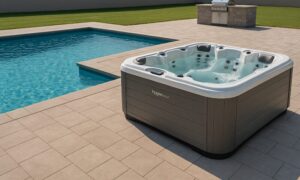Welcome to the world of cue sports, where we’re about to unravel the differences between billiards, pool, and air hockey tables. Imagine these games as unique chapters in the big book of cue sports, each with its own rules and style.
Whether you’re a pro or just curious, let’s break down these games into simple bits, making it easy for everyone to understand the distinct flavors that billiards, pool, and air hockey bring.
Origins and History
Embark on a journey to uncover the roots of billiards, pool, and air hockey. From the refined halls of European nobility to the bustling pool halls of the 19th century and the creation of air hockey in the late 20th century, witness how these games have evolved, shaped by cultures and centuries of play.
Cue Sports Quick Comparison Table
This concise table provides a quick overview of the key aspects of billiards, pool, and air hockey.
| Aspect | Billiards | Pool | Air Hockey |
| Table Size | Rectangular, various sizes | Smaller, various sizes | Compact and square |
| Balls/Pucks Used | Three balls, various materials | Pool balls, often phenolic resin | Lightweight puck |
| Number of Players | Usually one-on-one, variations | One-on-one or teams | Primarily two players |
| Scoring Systems | Points for pocketing balls | Points for pocketing balls, varied by color/number | Points for scoring goals |
| Cue Characteristics | Precision cues, varied lengths/weights | Similar to billiards cues | Handheld strikers, no cues |
| Game Rules/Objectives | Pocket balls for points | Various rules, pocket balls for points | Score by propelling puck |
| Popular Variations | 8-ball, 9-ball, straight pool | 9-ball, 8-ball, cutthroat | Various rule tweaks |
| Skill Sets/Techniques | Aim, ball control, strategy | Precision, decision-making | Reflexes, coordination |
| Cultural Impact | Refined gatherings, literature | Pool halls, popular culture | Arcade, modern gaming |
| Notable Tournaments | WPBSA tournaments | Mosconi Cup, U.S. Open | Air Hockey World Champs |
| Accessibility/Popularity | Diverse settings, upscale to casual | Bars, clubs, widely accessible | Arcades, homes |
Table Size and Dimensions
Dive into the specifics of table sizes and dimensions, a fundamental aspect that sets these games apart. Understand how the length and width of each table influence the flow of the game, creating unique dynamics for billiards, pool, and the fast-paced world of air hockey.
Billiards
Rectangular tables with dimensions varying based on the specific type of billiards game.
Commonly measured at 9 feet in length and 4.5 feet in width, with a playing surface of 100 square feet.
Pool
Slightly smaller than billiards tables, typically found in various sizes in recreational and professional settings.
Common sizes include 7, 8, or 9-foot tables, each influencing the speed and complexity of the game.
Air Hockey
Compact and square, designed for rapid gameplay, with a smooth playing surface that allows for the quick movement of the puck.
Standard dimensions include a 7-foot playing surface with a table length and width of approximately 8 feet.
Types of Balls/Pucks Used
Explore the world of balls and pucks, understanding how the choice of equipment contributes to the essence of each game.
Billiards
Typically uses three balls, with variations in size and material based on the specific billiards game.
Common materials include ivory (historically) or phenolic resin for modern play.
Pool
Involves various ball sets, each with its color and number, adding an element of strategy to the game.
Standard pool balls are usually made of phenolic resin, providing durability and consistent play.
Air Hockey
Features a lightweight puck designed for swift and frictionless movement across the air hockey table.
Pucks are commonly made of plastic, with a smooth surface to glide effortlessly on the table.
Number of Players
Learn about the social dynamics as we discuss the typical number of players for each game.
Billiards
Often played one-on-one, but there are variations for multiple players.
Team play is less common but adds an extra layer of strategy and coordination.
Pool
Can be played one-on-one or in teams, fostering a sense of camaraderie during gameplay.
Team sizes can vary, often ranging from 2 to 4 players depending on the specific pool game.
Air Hockey
Primarily designed for two players, creating an intense head-to-head gaming experience.
While less common, variations exist for team play, typically involving two players per team.
Scoring Systems
Delve into the intricacies of scoring systems, unlocking the secrets behind successful plays.
Billiards
Points are earned by pocketing balls, with each ball carrying a specific point value.
The player or team with the highest cumulative points at the end of the game wins.
Pool
Similar to billiards, points are scored by pocketing balls, with variations in point values based on the ball’s color and number.
Different games have distinct rules for winning, such as pocketing a specific ball or achieving a set score.
Air Hockey
Points are earned by propelling the puck into the opponent’s goal, with the first player to reach a predetermined score declared the winner.
Standard games often play to a predetermined score, typically 7, 9, or 11 points.
Cue Characteristics
Explore the tools of the trade – the cues – and understand the nuances of cue characteristics.
Billiards
Cues are designed for precision and control, varying in length and weight based on player preference.
Standard cues range from 57 to 59 inches in length, with weights ranging from 18 to 21 ounces.
Pool
Similar to billiards cues but may vary in length and weight to accommodate different playing styles.
Shorter cues (around 48 inches) are common for tight spaces, while longer cues (up to 61 inches) provide extended reach.
Air Hockey
No cues are used; instead, players utilize handheld strikers to hit the puck.
Strikers, also known as mallets, are typically lightweight and easy to maneuver.
Game Rules and Objectives
Navigate through the rulebooks as we provide a comprehensive overview of the rules and objectives for each game.
Billiards
Involve pocketing balls in a specific order, with players aiming to score the most points.
Different variations, such as 8-ball and 9-ball, have unique rules and objectives.
Pool
Follows similar principles to billiards but may involve different variations and rules depending on the pool game being played.
Games like 8-ball, 9-ball, and straight pool each have their own set of rules and objectives.
Air Hockey
The objective is to score points by propelling the puck into the opponent’s goal, with players actively defending their goal.
Games typically play to a predetermined score, and additional rules may apply, such as puck possession time limits.
Popular Variations
Uncover the creative adaptations and variations that enthusiasts have introduced to these timeless games.
Billiards
Various games like 8-ball, 9-ball, and straight pool offer unique challenges and strategies.
One-pocket and bank pool are popular variations, each with its own set of rules.
Pool
Endless variations, including different rules and setups for games like 9-ball, 8-ball, and cutthroat.
Rotation and snooker are additional variations that cater to different skill levels.
Air Hockey
While air hockey itself is a variation of traditional hockey, enthusiasts may introduce variations in puck size or gameplay rules for added excitement.
“Three-Goal” and “Doubles” are examples of popular variations that add twists to standard air hockey play.
Skill Sets and Techniques
Embark on a skill development journey as we discuss the specific techniques and abilities required for success in billiards, pool, and air hockey.
Billiards
Requires precision aiming, ball control, and strategic shot planning.
Mastering techniques like English (cue ball spin) and understanding angles are crucial skills.
Pool
Combines precision with quick decision-making, as players navigate the placement of each ball on the table.
Skill sets include banking shots, position play, and strategic safety shots.
Air Hockey
Demands quick reflexes, hand-eye coordination, and strategic puck placement to outmaneuver opponents.
Techniques such as bank shots and puck control add depth to air hockey gameplay.
Cultural Impact
Explore cue sports’ cultural significance, transcending beyond the gaming table.
Billiards
Often associated with refined social gatherings and are portrayed in literature and film.
Classic depictions in movies like “The Hustler” and “The Color of Money” have contributed to billiards’ iconic cultural status.
Pool
A staple of social interactions in pool halls, depicted in various forms of popular culture.
Movies like “The Hustler” and “Poolhall Junkies” showcase the allure and drama of pool.
Air Hockey
Gained popularity in arcades, embodying the fast-paced and energetic spirit of modern gaming.
While less prevalent in traditional media, air hockey has carved a niche in arcade and recreational culture.
Notable Tournaments and Events
Highlighting the competitive spirit, we spotlight major tournaments and events in the professional world of cue sports.
Billiards
Events like the World Professional Billiards and Snooker Association (WPBSA) tournaments showcase top-tier billiards competitions.
The World Championship is a pinnacle event attracting elite players from around the globe.
Pool
Prestigious events like the Mosconi Cup and the U.S. Open Pool Championship attract elite pool players from around the world.
The Derby City Classic and World Pool Masters are notable events in the world of professional pool.
Air Hockey
While not as formalized as billiards and pool, competitive air hockey tournaments showcase skilled players in the fast-paced arcade environment.
The Air Hockey World Championships bring together enthusiasts from around the world.
Accessibility and Popularity
Examine the accessibility and popularity of billiards, pool, and air hockey across different regions and demographics.
Billiards:
Commonly enjoyed in various settings, from upscale billiard halls to casual home setups.
Accessibility is high, with community centers and recreational spaces often featuring billiards tables.
Pool
Widely accessible, with pool tables found in bars, clubs, and recreational spaces worldwide.
The social nature of the pool contributes to its widespread popularity.
Air Hockey
Thrives in arcade environments, offering a lively and accessible gaming experience.
Portable air hockey tables contribute to its popularity in homes and recreational spaces.
Conclusion
In conclusion, we’ve unraveled the threads that distinguish billiards, pool, and air hockey, each contributing its unique flavor to the world of cue sports. Embrace the diversity, appreciate the history, and most importantly, enjoy these games’ timeless pleasure. Whether you’re a seasoned player or a curious onlooker, the world of cue sports invites you to explore, play, and relish every shot’s artistry.
FAQs
Q1: What are the key differences between billiards, pool, and air hockey?
A1: Billiards focuses on carom shots on a rectangular table, pool involves pocketing balls, and air hockey is a fast-paced game with a puck on a cushion of air.
Q2: How do the table sizes differ in billiards, pool, and air hockey?
A2: Billiards tables are rectangular, often 9 feet in length. Pool tables are slightly smaller, and air hockey tables are compact and square.
Q3: What skills are crucial for success in billiards, pool, and air hockey?
A3: Billiards requires precision and strategic shot planning, pool demands precision and quick decision-making, and air hockey relies on reflexes and strategic puck placement.



































